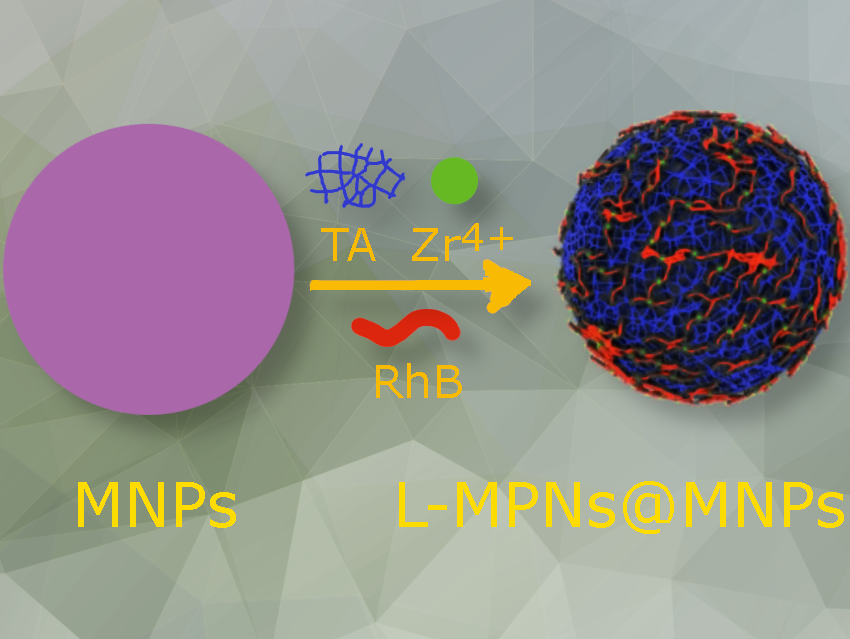Tianxi Yang and colleagues, University of British Columbia, Vancouver, Canada, have developed an affordable ($0.015 per assay) and portable device that detects plastic particles. Using fluorescent markers and remote data processing via machine learning algorithms for quantitative fluorescence imaging and a smartphone app, the device can identify micro- and nanoplastic particles.
The researchers use a supramolecular labeling strategy involving luminescent metal–phenolic networks (L-MPNs) made from zirconium ions (Zr4+), tannic acid (TA), and rhodamine B (RhB) to efficiently label micro- and nanoplastics (MNPs) ranging from 50 nm to 10 μm in size. The self-assembly process that forms L-MPNs on MNPs is illustrated schematically above.
The labeling process relies on a self-assembly mechanism, which changes the electrical charge (zeta potential) of plastic particles, facilitating easier detection. The polyphenols in L-MPNs interact with plastics through various molecular interactions, including π–π stacking, making them versatile for different plastic types. This approach not only labels the plastics but also causes nanoplastics to aggregate, which helps in their separation and concentration for further analysis.
The team demonstrated the effectiveness of their device on real-world samples by detecting micro- and nanoplastics released from six commercially available cups composed of polystyrene (PS), polypropylene (PP), polylactic acid (PLA), and polyethylene terephthalate (PET) after exposure to hot water and flow induction, as well as nanoplastics present in tap water.
The team believes that the technology simplifies plastic detection and has great potential for high-throughput screening of micro- and nanoplastics (MNPs), e.g. in agricultural and food systems and environmental protection.
- Cost-Effective and Wireless Portable Device for Rapid and Sensitive Quantification of Micro/Nanoplastics,
Haoxin Ye, Xinzhe Zheng, Haoming Yang, Matthew D. Kowal, Teresa M. Seifried, Gurvendra Pal Singh, Krishna Aayush, Guang Gao, Edward Grant, David Kitts, Rickey Y. Yada, Tianxi Yang,
ACS Sensors 2024.
https://doi.org/10.1021/acssensors.4c00957





